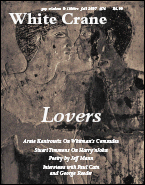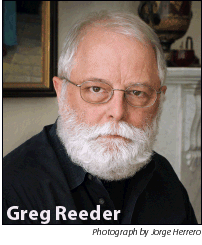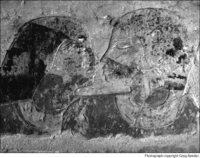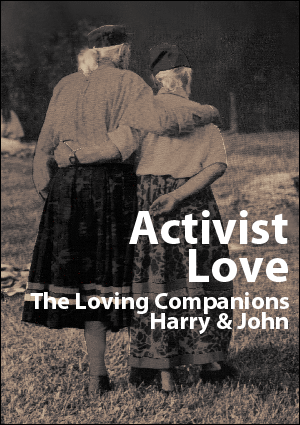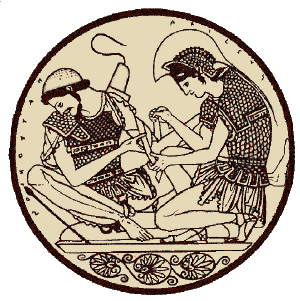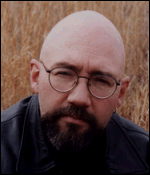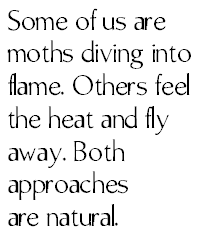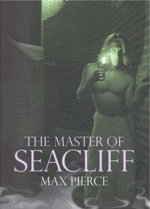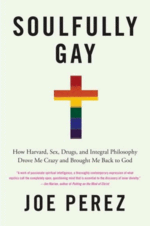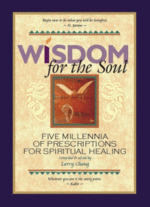 Health Dogma or Smorgasbord
Health Dogma or Smorgasbord
By Jeff Huyett
I recently heard a young Muslim man speak about religious plurality. He noted that much of the conflict occurring between the Judeo-Christian and Muslim worlds is based on a religious absolutism that prevents discourse between the religions. Each has the philosophy that its path is the one true path to holiness or the Divine. All others are infidels or non-believers in need of salvation or enlightenment. The work of these religions is, then, to proselytize to those outside their belief system to change their belief to be the same as theirs. Thus, conflict arises because each believes that theirs is the only true way. This young man’s notion was that modern day religions must accept the beliefs of others as possibilities to remove the innate conflict. Were religions to embrace this philosophy, much of the conflict of between monotheistic religions would begin to dissolve as each could embrace the other as heading down a path to the Divine though it may be a different path than their own.
Health beliefs are often similar. We tend to believe that one philosophy is better than others. We adhere to a method and believe that other ways are just not as healthy. Sometimes this absolutism can create conflict with others and strict adherence may actually be causing harm unbeknownst to that person.
In the burgeoning HIV epidemic of the ‘80’s, Western Medicine had limited answers and even less treatment for those living with the disease. In the midst of an emerging “New Age” philosophy, many Gay men and other folks with HIV turned to “alternative and complementary therapies” to find healing and treatment for their disease. In the era when AZT was prescribed in very high doses, many people avoided this treatment which was sometimes as deadly as HIV itself. Desperate for relief and healing, people with HIV energized many of these older philosophies toward healing in this country. This expanded interest in alternative methods has continued and grows even today. The growth of complementary therapies has even stimulated development of regulation of these therapies through the Food and Drug Administration much the same as pharmaceutics.
Many “alternative” methods for health are older than modern medicine. Their roots come from traditional healers and practitioners who existed long before “medicine” was organized. As a nurse, I honor the importance and place of these methods in patient care. But sometimes users of these methods can adhere to a sort of dogma about health and health practices that collides with the views of doctors or nurses in this country.
There exists today, still, people who do not believe that HIV is the cause of immune suppression that can lead to opportunistic infections that define AIDS. I’m still baffled when I meet patients who refuse to believe that HIV is the cause of AIDS and refuse to test to see if they are infected. Because I believe in the practice of collaboration with my patients, I try hard to relate to patients with these beliefs and find a way for us to hit common ground in our relationship. It’s not always easy.
It is incredibly sad when I provide an HIV-positive diagnosis to someone who has become ill with an opportunistic infection and it is their first knowledge of having HIV. It just doesn’t make sense to me for someone to avoid testing because they don’t believe they will become ill with HIV. An infection, like pneumocystis carnii pneumonia, occurs and can be deadly if treatment is avoided. And the scarring caused by this bug can cause breathing problems for the rest of the person’s life. HIV wasn’t in the patient’s belief system, they wouldn’t get tested, and their immune system failed before they even knew they were ill.
I used to be very touchy-feely with patients like this to honor their beliefs. Today, it’s just too difficult to let this kind of belief slide. I have to confront this denial and ignorance as I cannot watch another person die senselessly by their own misinformation. These patients will tell me that HIV isn’t the reason that people die and that they die from the antiviral therapy that is prescribed. Since I lived through the times when I watched a patient a week be buried, I just cannot keep my cool. I tell them directly, “If HIV is not the cause of AIDS and the meds are poison, why is it that people are not dying like they used to before the ‘cocktail?’” Or, “With your disbelief you dishonor all the men and women who have died before there actually was effective treatment.” Typically, when a patient will not come around to understanding HIV as the cause of AIDS, I have to refer them to another provider. Our relationship just won’t work effectively for either of us. Now, I understand that we don’t have all the answers about HIV and it’s natural history and treatment, but I feel pretty confident that we are heading in the right direction.
This type of extreme belief isn’t especially common but I come across it often enough. I even have providers send patients to me to try to help them work through their disbelief. But this really isn’t the role I like to play. I like the role of collaborator with the patient. I like to work with patients to understand their bodies and the particular illness with which they are bothered and come to some level of healing path that will ensure their health as well as maintain the integrity of their beliefs.
Commonly, I will encounter a patient who needs a particular pharmaceutical to treat their illness but they’ll refuse to take anything. I’m comfortable with recommending non-prescriptions for treatment. I like to have patients adjust their diet and change their lifestyle as a way to improve their health. Prescription medicines are commonly the last thing I recommend. But sometimes, a patient says “I don’t take pills,” or “I won’t use prescription medicines.” At the same time, these patients often use a variety of herbal and supplement preparations that they will take multiple times a day.
They use complex regimens of pills, powders and pastes that can make even a complex HIV regimen look pretty simple. They will adhere to a regimented diet that limits their ability to interact and socialize. They worry about getting in their treatments to such a level that can cause them great anxiety. I’ve never felt that this kind of management was very healthy. I use the term “health monotheism” to describe patients who completely reject all other methods of health and healing for the path they have chosen. There is no one path to health that I believe is completely right. And while most complementary therapies are fairly safe, some can be just as dangerous as the medicines that come from big pharmaceutical companies.
One example is a young woman I saw who came to see me because she was feeling fatigued, had a poor appetite, and felt depressed. I spent time talking with her about her health beliefs, assessing health patterns and choices, and doing physical exam. Generally, she had been very healthy through her life. She disclosed that she was taking high doses of chamomile to reduce anxiety she was having. She had heard it was safe and helpful to calm her and had been dosing in this high range for three months. She was pleased with the results but was now concerned about these other symptoms that had arisen. She was working with an energy healer and acupuncturist.
She typically engaged a physician only when she her acupuncturist told her or when her current practitioners could not relieve her symptoms. She voiced distrust of the “big medical machine” and doctors. She had never seen a nurse practitioner and hadn’t had a women’s health preventative exam in over five years. (This is the exam that checks one’s breasts and cervix for early detection and prevention of cancers.) When I felt her liver I noticed that it was tender and mildly enlarged. Assuming she had a hepatitis virus, I did the typical battery of liver tests and immunological tests. There were no signs of infection but obvious liver inflammation. I recommended she stop the chamomile immediately and come see me in two weeks. She did this and her liver tests came back to normal range. Her presenting symptoms were relieved.
While this clear-cut example isn’t common, the disdain for the US health care system is. Certain personal events or community norms can shape our trust in the people we seek out for advise on healing. One bad experience can color our future with any provider. When one method or clinician fails us we can grasp on to one type of philosophy and then adhere to it religiously. This is when our health monotheism can lead to a dogma that can be harmful.
In my last column, I encouraged readers to find a provider with whom they are comfortable and find it easy to develop a relationship. The primacy of our relationship with a healer is really the most important part of the healing relationship. We work with someone who gets to know us and our beliefs, is familiar with our bodies, and the subsequent recommendations come from this relationship of knowing. For basic wellness and health promotion, there exist many methods within the various philosophies, each with a grounding in history, repetition, and, sometimes, research. When an illness or lack of health creep in, various philosophies tend to diverge on causality and thus, can create discord between the beliefs about the best way to heal.
Since health is individualized, I don’t believe one method is better than another to achieve health. For myself, and for patients, I believe that the best approach to healing is first to be well informed. I recommend that one seek information from various sources to achieve an understanding about what is going on in their bodies. The patient is the one who is best at knowing what is going on since they reside in their bodies. But their information about their bodies may be so skewed as to cause misinterpretation. This is where a consultant can be beneficial. Chinese medicine, for example, is drastically different from Western medicine in causes of illness and treatments. So many of us, then, have an opportunity to seek guidance from two very different modalities in order to be better informed about our experience of our bodies. We don’t have to believe everything about either philosophy in order to gain from its wealth. But each can provide a rich source of information with which to make decisions.
I typically find that the patient who does best is the one who is informed and bases their decisions on that information. So a plurality of beliefs can only benefit us when it comes to our health. If no one method is perfect, then this variety of information sources can only improve our own path to health by providing us with a broader range of health choices and selections. We can take the relevant information from the various philosophies to develop a plan that suits our own personal need.
I encourage the health absolutists to explore a variety of methods. Thus, when a patient is completely sold on one method, I encourage them to talk to another type of clinician for an opinion about where their body is and how it is responding to the current practice the patient is keeping. Since physical assessment varies between philosophies, one clinician may uncover something a clinician from a different paradigm failed to unearth. This disparity of philosophy then provides for a broader range of assessment and method. So gaps in one philosophy can be filled in where another philosophy lacks.
If you have only seen physicians for your health care, consider seeing a clinician from a completely different paradigm. See an acupuncturist or body worker or even a nurse. Expand your notion and understanding of your body and your particular concern. If you see only “alternative practitioners” consider an evaluation with a physician, nurse practitioner, or physician’s assistant to evaluate, in Western terms, the results and consequences of various therapies on your body. Though the research paradigm in Western medicine continues to be questioned, it can give us many valuable answers about the operation of the body that are readily objective and easy to interpret. So when a patient is using a therapy not extensively researched, that patient can use well-proven methods to evaluate outcomes.
The danger of absolutism is what you miss. An example is monitoring labs like the woman doing the chamomile. Though we may feel well, some treatments may have a long-term impact on the body. We do not have to do everything that our healers recommend. But we can enter and continue our path to health and wellness with our eyes wide open. We can use the wealth of information available to make conscious informed decisions as opposed dogmatic adherence.
This is just an excerpt from this issue of White Crane. We are a reader-supported journaland need you to subscribe to keep this conversation going. So to read more from this wonderful issue SUBSCRIBE to White Crane. Thanks!
Owner’s Manual is a regular feature of White Crane. Jeff Huyett is a nurse practitioner in NYC. His clinical work has primarily been in Queer health with a focus on HIV, rectal and transgender care. He is the Radical Faerie Daisy Shaver and is involved with the development of Faerie Camp Destiny Radical Sanctuary in Vermont and can be reached at JeffANP@aol.com
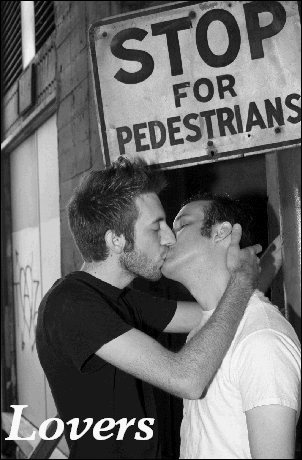 White Crane #74 – The Lovers Issue
White Crane #74 – The Lovers Issue